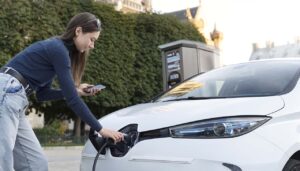
Picture showing muscular car service worker repairing vehicle.
Changing your car’s oil is a crucial maintenance task that keeps your engine running smoothly and extends the lifespan of your vehicle. While it may seem daunting at first, with the right tools and some basic knowledge, changing your oil at home can be a straightforward and rewarding process. This guide will provide you with a step-by-step approach to changing your car’s oil, ensuring you can perform this essential task safely and efficiently. Whether you’re a seasoned DIY enthusiast or new to car maintenance, our guide is designed to help you get the job done with confidence.
Gather Necessary Supplies
Before beginning the oil change process, it’s essential to have all the necessary supplies on hand. Here’s a list of items you’ll need:
- Engine oil: Be sure to purchase the grade of oil recommended by your vehicle’s manufacturer.
- Oil filter: Similarly, choose an oil filter that’s compatible with your car model.
- Oil filter wrench: This tool will help you remove the oil filter.
- Socket wrench set: Necessary for removing and tightening various nuts and bolts.
- Oil drain pan: To catch the old oil as it’s drained from the engine.
- Funnel: Makes it easier to pour oil into the engine without spillage.
- Jack and jack stands: These are essential for lifting and supporting your car safely while you work underneath it.
- Shop towels: Useful for cleaning up any spills and wiping your hands.
Having these supplies ready before you start will make the oil changing process smooth and efficient.
Prepare Your Car
To begin, park your vehicle on a flat, level surface to ensure it is stable during the oil change process. It is important to allow the engine to cool down for at least 30 minutes before you start working to prevent burns from hot engine parts. Safety should be your top priority, so place chocks around the wheels that will remain on the ground to prevent the car from rolling. Once the car is securely chocked and the engine is cool, use the jack to lift the front of the car. After reaching the desired height, place jack stands beneath the car to support it. Ensuring your car is lifted and supported safely is crucial before proceeding with the oil change.
Locate the Oil Drain Plug and Oil Filter
Once your car is safely lifted and supported, the next step is to locate the oil drain plug and oil filter. The oil drain plug is typically found on the bottom of the engine. It’s where the used oil is drained out from the engine oil pan. The location of the oil filter can vary, but it is usually positioned on the side of the engine. Both of these components are essential in the oil change process, and their exact locations can differ based on the make and model of your vehicle. If you’re unsure where to find the oil drain plug or oil filter, consult your car’s owner’s manual. Most manuals will have detailed diagrams showing where these parts are located. This step is crucial in preventing any mistakes and ensuring a smooth oil change process.
Drain the Old Oil
After locating the oil drain plug, position the oil drain pan directly underneath it to catch the old oil. Using a socket wrench, carefully unscrew the drain plug, allowing the old oil to flow out into the pan. It’s important to give the oil ample time to drain completely, ensuring you remove as much of the old oil as possible. Once the oil has finished draining, move on to replacing the oil filter. Remove the old oil filter using the oil filter wrench, taking care to prevent any remaining oil from spilling. Before installing the new oil filter, apply a small amount of fresh oil to the rubber seal of the new filter. This will help ensure a proper seal and prevent leaks. Finally, screw in the new oil filter by hand. Be sure not to overtighten, as this can cause damage to the oil filter or the engine.
Replace the Oil Filter
Once the old oil has been completely drained and you’re ready to proceed, it’s time to focus on the oil filter. Begin by using an oil filter wrench to firmly grip and turn the old filter counterclockwise until it’s free. Be prepared for a small amount of oil to escape as you remove the filter. Next, take your new oil filter and apply a thin layer of fresh oil to the rubber gasket on the top. This lubrication is crucial as it ensures a tight seal, preventing any future leaks. Carefully align the threads and screw on the new filter by hand. It’s important to only hand-tighten the filter to avoid cross-threading or over-tightening, which could damage the filter or the engine.






